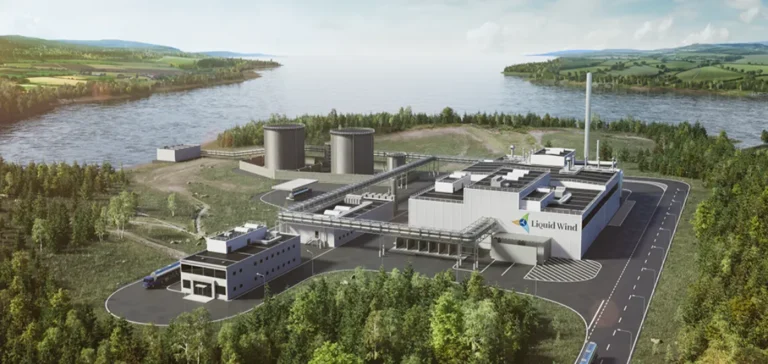Liquid Wind has received a €3.6mn ($3.79mn) grant under Industriklivet, a programme run by the Swedish Energy Agency (Energimyndigheten). The funding will support the pre-engineering phase of its eMethanol plant in Örnsköldsvik, northern Sweden. The grant is part of a national initiative aimed at reducing greenhouse gas emissions in hard-to-abate industrial sectors.
A locally rooted industrial project
The planned facility will be integrated with Övik Energi’s biomass-fuelled combined heat and power (CHP) plant, allowing synergies between heat recovery, carbon dioxide capture and electrolysis using renewable electricity. The plant aims to produce 100,000 tonnes of eMethanol annually by combining green hydrogen with 150,000 tonnes of captured biogenic CO₂. The system is expected to enable the avoidance of 200,000 tonnes of CO₂ equivalent each year.
The Swedish Energy Agency stated that the project forms “a solid basis for a future investment decision” by Liquid Wind, highlighting its alignment with Industriklivet’s decarbonisation objectives.
Political backing with a European scope
The grant awarded to Liquid Wind comes through the Industriklivet programme, which is integrated into the European Union’s Next Generation EU recovery plan via the Recovery and Resilience Facility (RRF). The scheme is intended to accelerate industrial transition in Europe by funding low-carbon technologies.
According to Liquid Wind, the funding also acts as a lever to attract international investors and partners. “It is a strong commitment from the Swedish government that sends a clear signal to the market,” said Claes Fredriksson, founder and Chief Executive Officer of the company.
Towards full-scale commercial production
Liquid Wind aims to industrialise eFuel production across Europe using modular projects connected to local infrastructure. The Örnsköldsvik site is a strategic step to validate the economic and technical model before expanding to additional locations across the continent.
The project’s development is based on full integration with existing industrial and energy flows, particularly from the forestry industry. The ability to capture and utilise biogenic CO₂ in a short-loop system is one of the project’s key technological features.






















